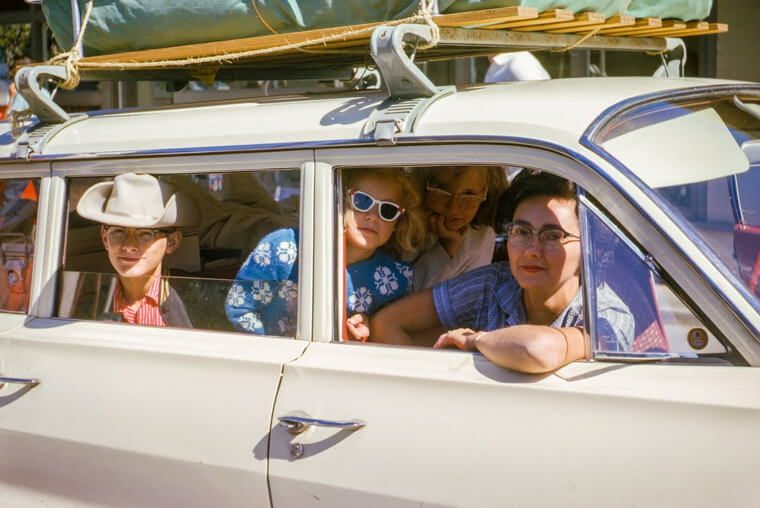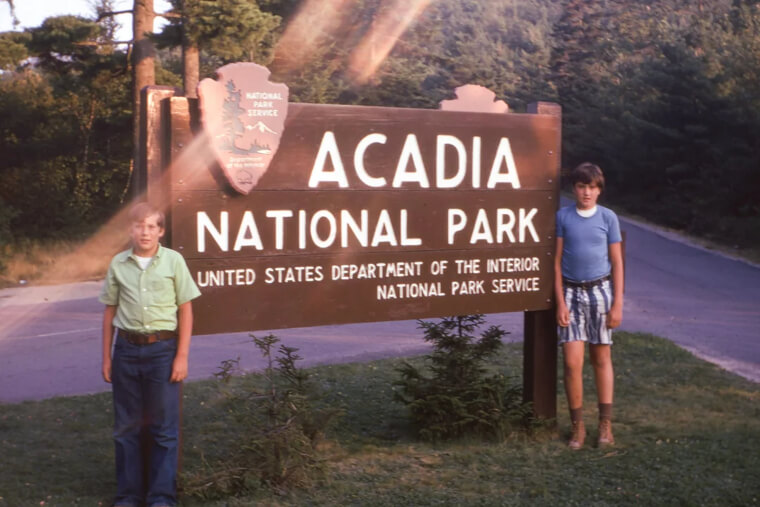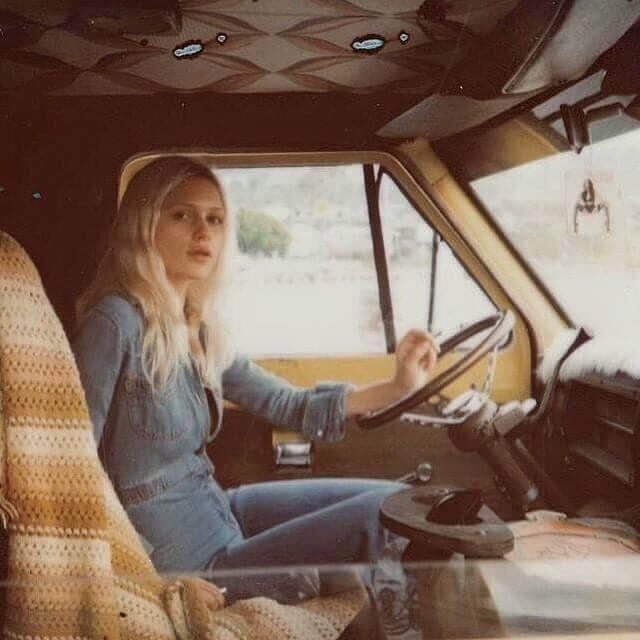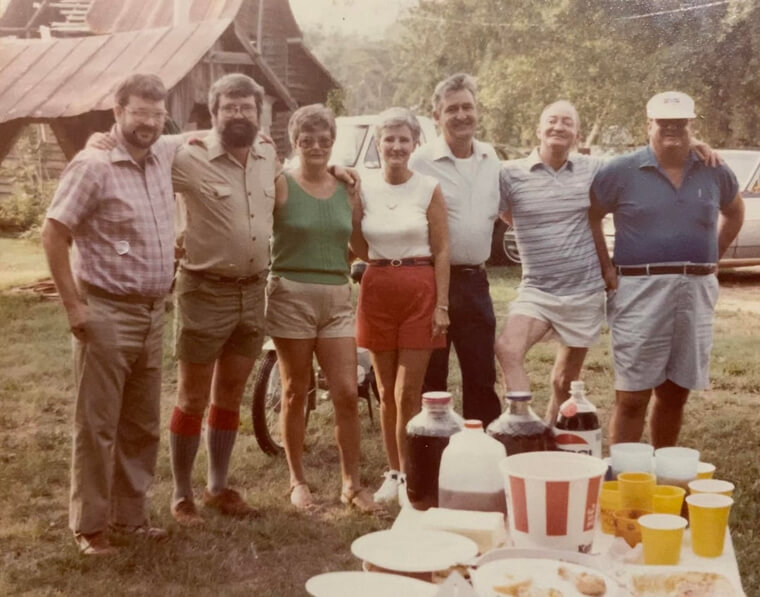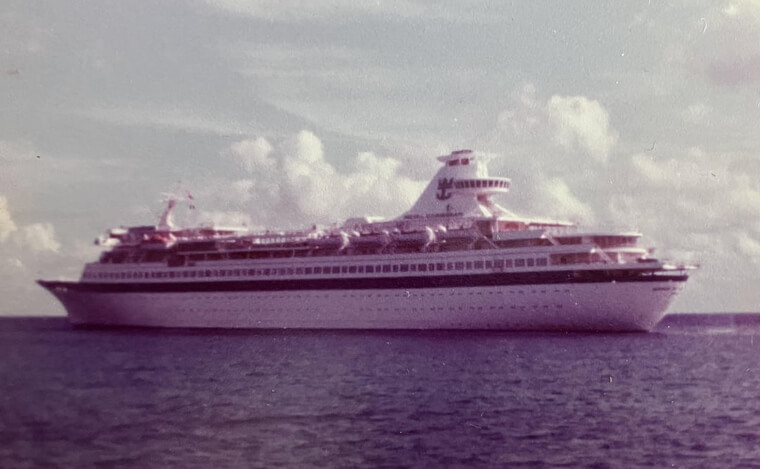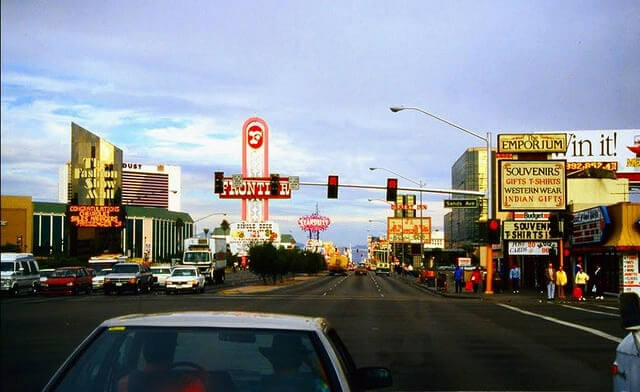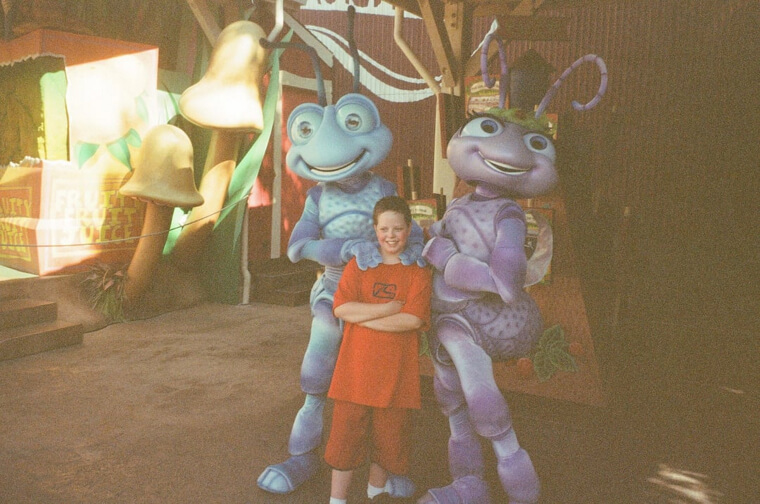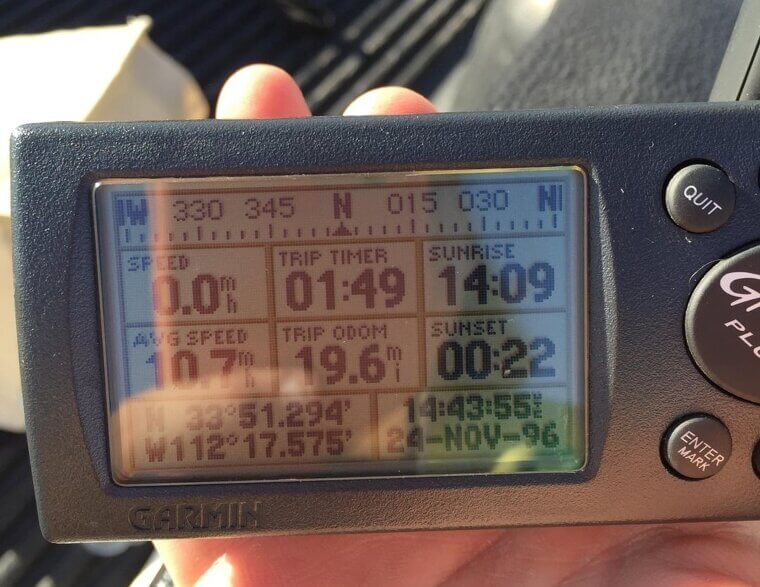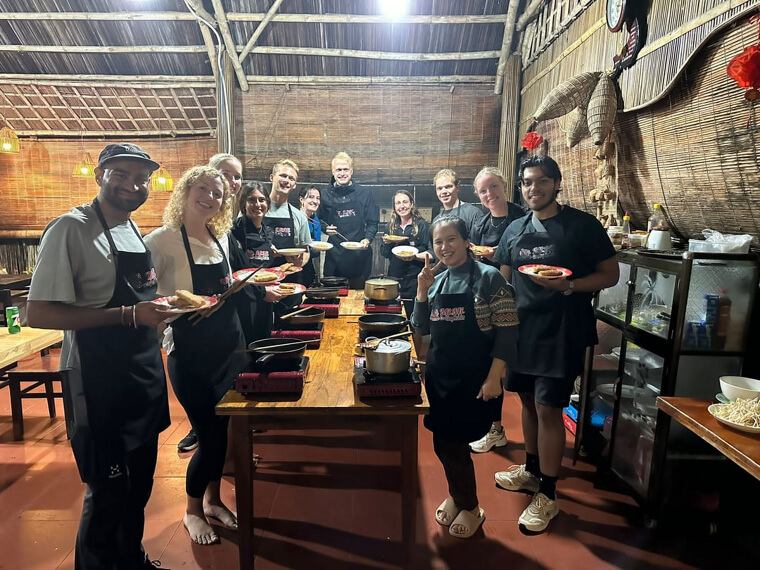1960 - The Great American Road Trip
In 1960, the family road trip was a rite of passage. Dad packed the trunk, Mom filled the picnic basket, and the kids fought over who got the window seat. Interstates were expanding, making cross-country travel easier than ever. The family car was a second home, complete with paper maps, a transistor radio, and a glove box full of napkins from diners along the way. Campgrounds and motels lined the highways, promising air conditioning and color TV. There was no GPS, no playlists, and no seatbelts in the back. What you had instead was a sense of freedom and adventure that made every drive feel like a journey. The destination mattered less than the drive itself. Families came home tired, sunburned, and full of stories about detours that turned into their favorite memories.
1965 - The Beach Vacation
By 1965, more families were heading toward the coast. The beach had become the classic symbol of American leisure, and the car was still the vehicle of choice. Families loaded up with towels, toys, and coolers packed with sandwiches wrapped in wax paper. Dad carried the folding chairs while Mom reminded everyone to wait thirty minutes after eating before swimming. Kids chased waves until sunset, building sandcastles that collapsed before the day ended. Evenings were for boardwalk games, saltwater taffy, and long walks under neon lights. Beach vacations were affordable, relaxing, and delightfully predictable. Sunburn was a shared experience, and the smell of coconut oil lingered long after everyone got home. What mattered most was being together, laughing, and living in a moment that felt endless and golden.
1970 - The National Park Adventure
In 1970, America fell in love with its national parks. Families packed up campers and station wagons and headed for the mountains, the canyons, and the forests. Yellowstone, Yosemite, and the Grand Canyon became the dream destinations for families who wanted something real and wild. There were no devices to distract anyone, only postcards and Polaroids to remember the trip. Parents cooked over open fires while kids skipped rocks in rivers and chased each other around tents. At night, everyone huddled under blankets, listening to the crackle of the campfire and the unfamiliar sounds of nature. Families came home mosquito-bitten, a little dirty, and incredibly happy. These vacations were not about comfort or convenience but about exploring something bigger than themselves.
1975 - The Cross-Country Camper Trip
By 1975, families wanted comfort with their adventure. The rise of the camper van changed how Americans explored. The journey became the vacation. Parents could drive for hours, then pull over at a rest stop and cook dinner without ever leaving the vehicle. RVs symbolized independence and curiosity. Families set out on open highways, waving at other travelers, stopping at diners, and sleeping under the stars. Kids made up games to pass the time while the world rolled by outside their windows. Even when something went wrong, like a flat tire or an overheated engine, it became part of the story. The cross-country camper trip was a reminder that life did not have to move fast to be meaningful.
1980 - The Theme Park Boom
By 1980, the family vacation had a new mascot: the theme park. Families saved for months to afford the trip, often to Disney World or Disneyland, but smaller parks across the country thrived too. It was the age of roller coasters, costumed characters, and matching T-shirts. Parents took photos on disposable cameras while kids begged for souvenirs shaped like cartoon characters. The days were long, the crowds were huge, and nobody cared. Standing in line under the Florida sun became part of the ritual. For many children, it was the highlight of their year, a magical escape from everyday life. By the time everyone returned home, the car was full of melted candy, crumpled maps, and smiles that lasted for weeks.
1985 - The Big Family Reunion Trip
In 1985, family vacations began to blend with family reunions. Instead of fancy hotels, many chose lake houses, cabins, or Grandma’s backyard. It was the era of the extended family gathering, where cousins met for the first time and everyone posed for a group photo nobody would ever frame. There were coolers full of soda, paper plates stacked high, and long tables covered with casseroles and potato salad. Uncles manned the grill while kids played tag until dark. The goal was not exploration but connection. It was simple, inexpensive, and full of laughter. People left these reunions tired but content, promising to do it again next year even though everyone knew it would take three.
1990 - The Caribbean Cruise
By 1990, cruises were no longer just for the wealthy. They were for everyone who wanted sunshine, relaxation, and buffet tables that seemed to go on forever. Families boarded massive ships that offered pools, theaters, and tropical destinations all in one. The thrill was waking up in a new place without ever unpacking. Parents sipped drinks on deck while kids raced between game rooms and ice cream machines. There were shows every night, towel animals on every bed, and an endless sense of novelty. A cruise vacation was equal parts adventure and indulgence. It gave families a taste of luxury with none of the effort.
1995 - The Cabin Getaway
By the mid-90s, more families traded airports for peaceful cabins. The pace of life was speeding up, and people craved simplicity. A rented cabin near a lake or in the woods offered that. Families brought board games, fishing rods, and snacks for rainy days. There were no cell phones or Wi-Fi to distract anyone. Even teenagers eventually relaxed once they realized there was nowhere else to go. Days were spent swimming, hiking, or sitting quietly by the fire. At night, everyone gathered for stories or stargazing. These quiet getaways reminded families that comfort did not require constant motion or technology.
2000 - The Vegas Family Trip
By 2000, Las Vegas was working hard to reinvent itself as a family destination. It became a city of theme hotels, indoor roller coasters, and massive buffets. Families stayed at resorts that looked like castles, pyramids, or skyscrapers. Kids swam in hotel pools while parents slipped away for slot machines or shows. The energy of Vegas made even simple activities feel exciting. Families walked miles of glowing sidewalks, taking in the lights and sounds of a city that never rested. It was chaotic, entertaining, and completely over the top. Everyone left feeling like they had seen something unbelievable, even if it was just a volcano that erupted on cue.
2005 - The Disney Reboot
The early 2000s brought another wave of Disney magic. Parks expanded, movies became franchises, and the brand ruled family vacations. Families planned trips a year in advance, downloading schedules and reserving meals before even leaving home. Every moment was curated and documented with digital cameras. Parents compared notes on the best routes and shortest lines. Kids met their favorite characters and collected autographs in overpriced notebooks. The experience was expensive and exhausting, but it created memories that families cherished for decades. It was both a tradition and a pilgrimage for many, proof that childhood still had room for wonder.
2010 - The Tech-Savvy Vacation
By 2010, technology had transformed travel. Smartphones replaced maps, cameras, and guidebooks. Families could plan every stop, find every restaurant, and share every photo instantly. Vacations became part exploration and part digital scrapbook. Parents looked up reviews before trying a new diner, and kids watched movies in the backseat. The internet made it easier to plan but harder to disconnect. Trips became smoother and more convenient, yet something about them felt different. The journey was now measured in likes and battery life. Still, the sense of discovery remained, only filtered through a brighter screen.
2015 - The Experience Vacation
By 2015, travelers wanted meaning. Instead of just sightseeing, families started chasing experiences. They booked cooking classes in Italy, volunteered abroad, or rented Airbnbs in quiet villages. Vacations became about immersion, authenticity, and storytelling. Social media encouraged it, but for many, it was genuine curiosity. People wanted to learn something, not just escape something. Families came home with souvenirs that were handmade, meals that were learned, and memories that felt deeper than postcards. The world was smaller now, but it offered more to explore than ever.

